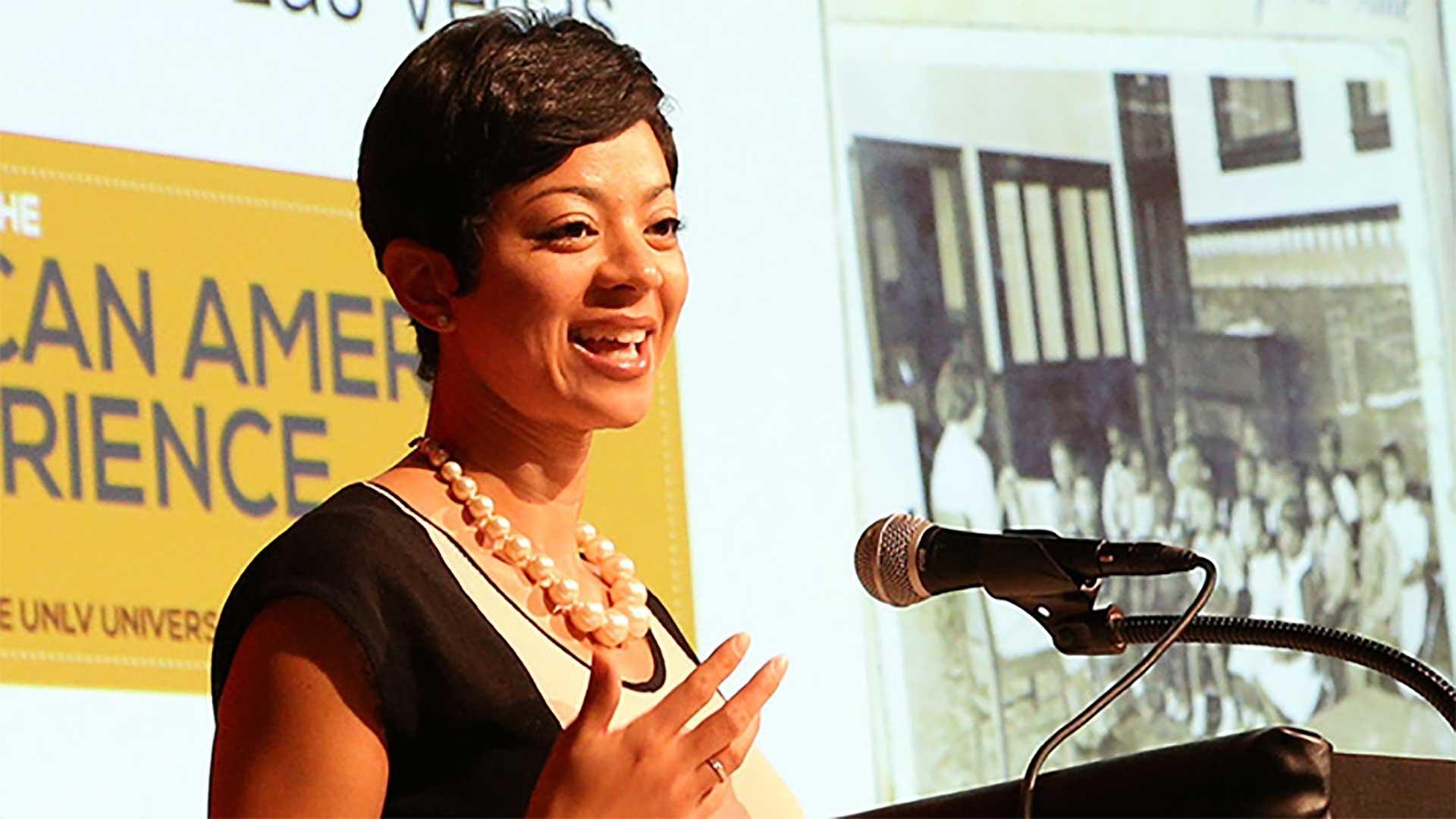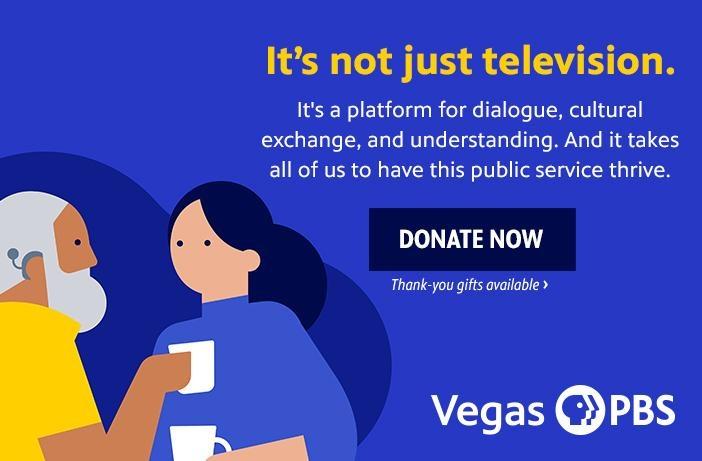
The African Americans: Many Rivers To Cross
Teacher Event
Vegas PBS and Clark County School District's (CCSD) Equity and Diversity Education Department held a Teacher Event on October 7, 2013 at Chaparral High School.

Keynote Speaker: Dr. Sonya Horsford
Dr. Sonya Horsford is an Associate Professor of Education in the Graduate School of Education and College of Education and Human Development at George Mason University. She holds an Ed.D. in educational leadership and an MPA in public administration from University of Nevada, Las Vegas (UNLV). Her previous position was senior resident scholar of education at The Lincy Institute at UNLV, and prior to that she was an assistant professor in UNLV’s Department of Educational Leadership.
Horsford’s research areas and interests include educational leadership and policy, contexts of educational leadership, educational inequality and opportunity, race and education, and community-based school reform. She is a member of the editorial boards of Educational Administration Quarterly, Journal of School Leadership, and Journal of Negro Education.
In 2011, she received the Emerging Scholar Award from Division A of the American Educational Research Association and Outstanding Reviewer Award from Educational Administration Quarterly, which is published by the University Council for Educational Administration.
The African Americans: Many Rivers to Cross with Henry Louis Gates, Jr.
Harvard scholar Henry Louis Gates, Jr. recounts the full trajectory of African-American history in his groundbreaking new six-part seriesThe African Americans: Many Rivers to Cross with Henry Louis Gates, Jr.
|
|
Episode Two: The Age of Slavery(1800 - 1860)The Age of Slaveryillustrates how black lives changed dramatically in the aftermath of the American Revolution. For free black people in places like Philadelphia, these years were a time of tremendous opportunity. But for most African Americans, this era represented a new nadir. King Cotton fueled the rapid expansion of slavery into new territories, and a Second Middle Passage forcibly relocated African Americans from the Upper South into the Deep South. Yet as slavery intensified, so did resistance. From individual acts to mass rebellions, African Americans demonstrated their determination to undermine and ultimately eradicate slavery in every state in the nation. Courageous individuals, such as Harriet Tubman Richard Allen and Frederick Douglass, played a crucial role in forcing the issue of slavery to the forefront of national politics, helping to create the momentum that would eventually bring the country to war. |
Episode Three: Into the Fire(1861 - 1896)Into the Fireexamines the most tumultuous and consequential period in African-American history: the Civil War and the end of slavery, and Reconstruction's thrilling but tragically brief "moment in the sun." From the beginning, African Americans were agents of their own liberation — forcing the Union to confront the issue of slavery by fleeing the plantations, and taking up arms to serve with honor in the United States Colored Troops. After Emancipation, African Americans sought to realize the promise of freedom — rebuilding families shattered by slavery; demanding economic, political and civil rights; even winning elected office. Just a few years later, however, an intransigent South mounted a swift and vicious campaign of terror to restore white supremacy and roll back African-American rights. Yet the achievements of Reconstruction would remain very much alive in the collective memory of the African-American community. |
Episode Four: Making a Way Out of No Way (1897 - 1940)Making a Way Out of No Way portrays the Jim Crow era, when African Americans struggled to build their own worlds within the harsh, narrow confines of segregation. At the turn of the 20th century, a steady stream of African Americans left the South, fleeing the threat of racial violence, and searching for better opportunities in the North and the West. Leaders like Ida B. Wells W.E.B. Du Bois Booker T. Washington Marcus Garvey organized, offering vastly different strategies to further black empowerment and equality. Yet successful black institutions and individuals were always at risk. At the same time, the ascendance of black arts and culture showed that a community with a strong identity and sense of pride was taking hold in spite of Jim Crow . "The Harlem Renaissance" would not only redefine how America saw African Americans, but how African Americans saw themselves. |
Episode Five: Rise! (1940 - 1968)Rise! examines the long road to civil rights, when the deep contradictions in American society finally became unsustainable. Beginning in World War II, African Americans who helped fight fascism abroad came home to face the same old racial violence. But this time, mass media — from print to radio and TV — broadcast that injustice to the world, planting seeds of resistance. And the success of black entrepreneurs and entertainers fueled African-American hopes and dreams. In December 1955, Rosa Parks refused to give up her seat to a white man on a city bus in Montgomery, Alabama, heralding the dawn of a new movement of quiet resistance, with the Reverend Dr. Martin Luther King, Jr. as its public face. Before long, masses of African Americans practiced this nonviolent approach at great personal risk to integrate public schools, lunch counters and more. As the civil rights movement scored one historic victory after another, non-violence was still all too often met with violence — until finally, enough was enough. By 1968, Dr. King, the apostle of non-violence, would be assassinated, unleashing a new call for "Black Power" across the country. |
Episode Six: A More Perfect Union(1968 – 2013)After 1968, African Americans set out to build a bright new future on the foundation of the civil rights movement's victories, but a growing class disparity threatened to split the black community in two. As hundreds of African Americans won political office across the country and the black middle class made unprecedented progress, larger economic and political forces isolated the black urban poor in the inner cities, vulnerable to new social ills and an epidemic of incarceration. Yet African Americans of all backgrounds came together to support Illinois' Senator Barack Obama in his historic campaign for the presidency of the United States. When he won in 2008, many hoped that America had finally transcended race and racism. By the time of his second victory, it was clear that many issues, including true racial equality, remain to be resolved. Now we ask: How will African Americans help redefine the United States in the years to come? |
| Major corporate support for The African Americans: Many Rivers to Cross is provided by Bank of America. Additional corporate funding is provided by The Coca-Cola Company and McDonald's. Leadership support is generously provided by the Abby and Howard Milstein Foundation, in partnership with HooverMilstein and Emigrant Bank. Major funding is also provided by the Ford Foundation, Dr. Georgette Bennett and Dr. Leonard Polonsky in Memory of Rabbi Marc H. Tanenbaum, Richard Gilder, the Hutchins Family Foundation, the W.K. Kellogg Foundation and the National Endowment for the Humanities. Support is also provided by the Corporation for Public Broadcasting and PBS. |







